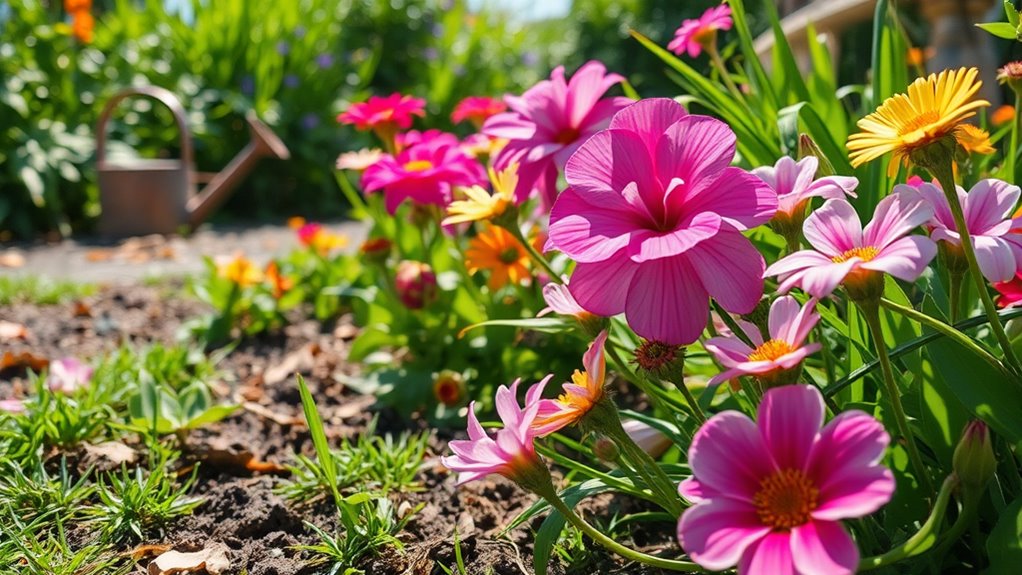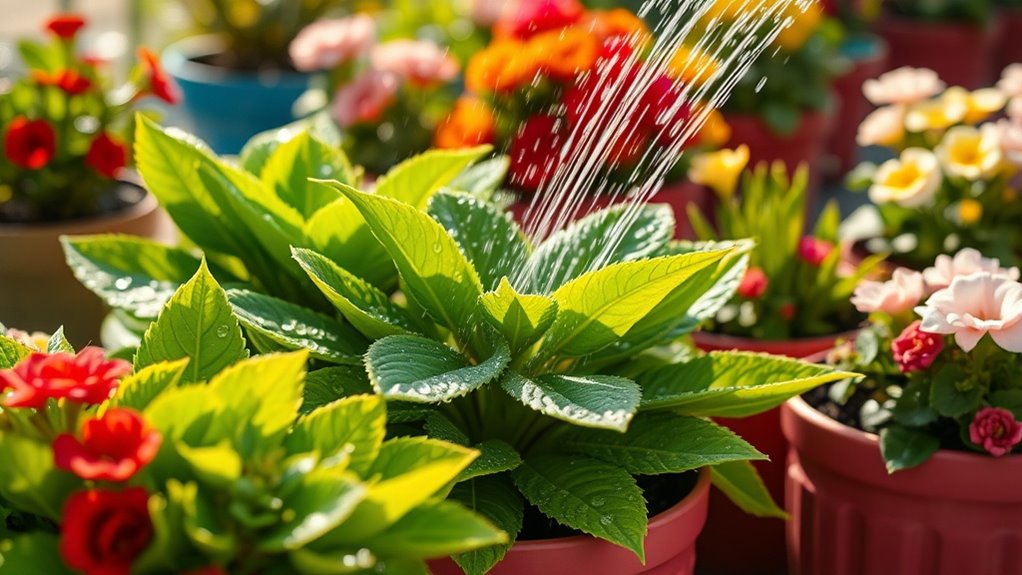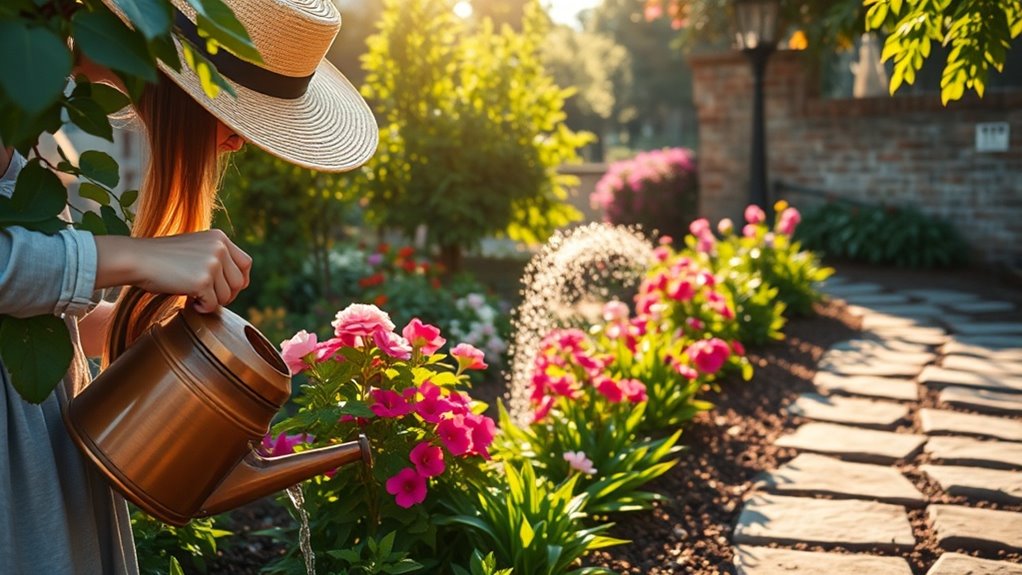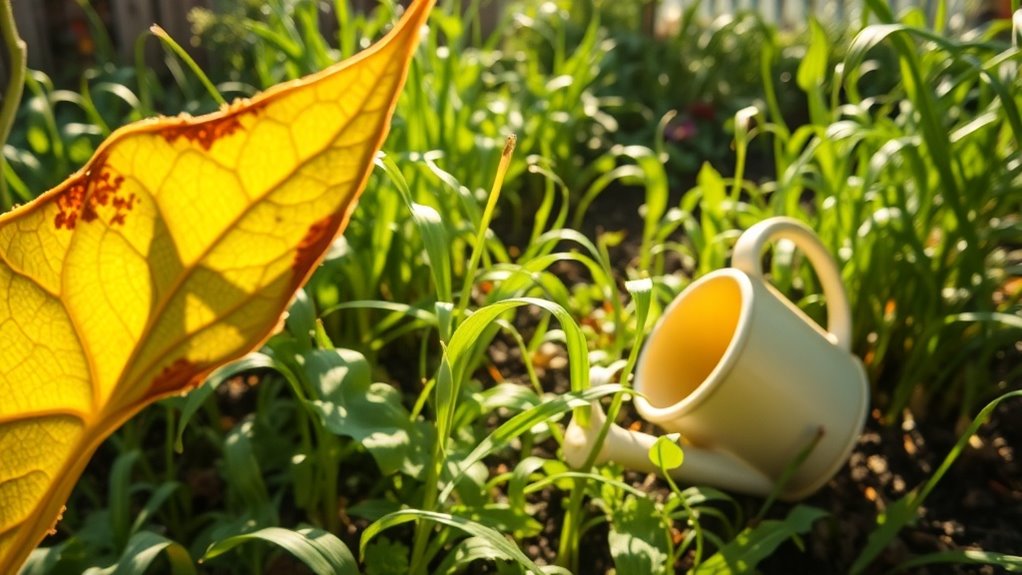7 Gardening Mistakes You’re Probably Making Without Knowing It
Gardening can be like cooking; too much salt can ruin a dish just as overwatering can drown your plants. You might think you’re nurturing them, but small missteps can lead to significant issues. From soil quality to sunlight needs, there are hidden pitfalls that can sabotage your efforts. Are you unknowingly making these mistakes? Let’s explore how to identify and correct these common errors for a healthier, thriving garden.
Key Takeaways
- Overwatering plants can lead to root rot, yellowing leaves, and pest attraction; always check soil moisture before watering.
- Poor soil quality and drainage problems can hinder plant growth; ensure soil has good structure and adequate drainage.
- Timing your planting incorrectly can affect seed germination; follow seasonal guidelines based on local climate and soil temperature.
- Neglecting sunlight requirements can stunt plant growth; most plants need at least six hours of direct sunlight daily.
- Overreliance on chemicals for pest management can harm beneficial insects and soil health; consider integrated pest management and natural alternatives.
Overwatering Your Plants
How can something as simple as water lead to disaster in your garden? Overwatering your plants is one of the most common gardening errors you can make.
When you give your plants too much water, it suffocates their roots, leading to root rot and other diseases. You might think you’re nurturing them, but excess moisture can attract pests and hinder growth. One of the key signs of overwatering is yellowing leaves, which can indicate that the roots are struggling to receive the oxygen they need.
To avoid this mistake, check the soil moisture before watering. Stick your finger about an inch into the soil; if it feels damp, hold off on watering.
Ignoring Soil Quality
What’s the secret to a thriving garden? It’s all about soil quality.
If you’re ignoring what’s beneath the surface, you’re setting yourself up for failure.
Healthy soil is rich in nutrients and has good drainage, allowing roots to access water and air.
Test your soil’s pH and nutrient levels regularly.
Amend it with organic matter, like compost, to improve its structure and fertility.
Don’t forget about aeration; compacted soil stifles root growth. Signs of struggling soil can manifest as poor plant growth or pest issues, and addressing these early can prevent larger problems.
By prioritizing soil health, you create a solid foundation for your plants, ensuring they get the nutrients they need to flourish.
Invest in your soil, and your garden will thrive.
Planting at the Wrong Time
When you plant at the wrong time, your garden can suffer significantly.
It’s crucial to understand seasonal planting guidelines and pay attention to soil temperature, as these factors directly affect seed germination and plant growth. Timing your planting correctly can mean the difference between a thriving garden and a disappointing yield. Additionally, understanding seasonal planting guidelines can help you choose the right crops for each season.
Seasonal Planting Guidelines
Timing can make or break your gardening success, especially when it comes to seasonal planting.
Each plant has its preferred planting window, so you need to know when to sow seeds or transplant.
For cool-season crops, like peas and lettuce, aim for early spring or fall.
Conversely, warm-season plants, such as tomatoes and peppers, thrive when planted after the last frost.
Keep an eye on local climate patterns and adjust your schedule accordingly.
Investing time in planning your planting dates can prevent wasted efforts and ensure a thriving garden, maximizing your harvest and enjoyment throughout the growing season.
Soil Temperature Importance
Understanding the impact of soil temperature is vital for successful planting.
If you plant seeds or seedlings when the soil’s too cold or too warm, you risk poor germination and stunted growth.
Cool-season crops like spinach thrive in temperatures between 50-65°F, while warm-season crops such as tomatoes prefer 70-85°F.
Always check soil temperature with a thermometer before planting.
You can speed up warming by covering the soil with black plastic or using row covers.
Not Considering Sunlight Requirements
When you’re planning your garden, it’s crucial to assess the sunlight exposure in your chosen area. Different plants have varying sunlight requirements, so selecting the right varieties can make all the difference in your garden’s success. Additionally, don’t forget to adjust your planting choices based on seasonal changes in sunlight to ensure your plants thrive year-round. For instance, some herbs can still flourish in low-light conditions, making them perfect for urban dwellers or spaces with limited sunlight access.
Assessing Sunlight Exposure
How can you ensure your plants thrive in your garden? Start by assessing sunlight exposure.
Observe your garden at different times of day to identify areas that receive full sun, partial shade, or full shade. Use a sunlight meter or app to measure light intensity if needed.
Remember that most vegetables and flowering plants prefer at least six hours of direct sunlight daily.
Keep in mind seasonal changes, as trees and buildings can create shifting shadows.
Choosing Proper Plant Varieties
After assessing sunlight exposure, the next step is choosing the right plant varieties for your garden.
Selecting plants that match your sunlight conditions is crucial for their growth.
Here are three key factors to consider:
-
Full Sun: Choose heat-loving plants like tomatoes, peppers, and sunflowers that thrive in direct sunlight.
-
Partial Shade: Opt for varieties like ferns, hostas, and astilbes, which flourish in dappled light.
-
Full Shade: Select shade-tolerant plants such as ferns, bleeding hearts, and certain types of ivy that can survive with minimal sunlight.
Making informed choices ensures your garden thrives beautifully!
Adjusting for Seasonal Changes
As seasons change, it’s essential to adjust your gardening practices to match the evolving sunlight conditions. Different plants thrive under varying light intensities, so pay attention to how sunlight shifts throughout the year. Here’s a quick reference table to guide your adjustments:
| Season | Sunlight Needs | Plant Examples |
|---|---|---|
| Spring | 6-8 hours | Tomatoes, Peppers |
| Summer | 8+ hours | Basil, Eggplant |
| Fall/Winter | 4-6 hours | Kale, Spinach |
Monitor your plants and reposition them if necessary to ensure they receive the right amount of sunlight.
Failing to Rotate Crops
One of the most crucial yet often overlooked practices in gardening is crop rotation.
By failing to rotate crops, you risk depleting soil nutrients and encouraging pests and diseases.
Here are three reasons you should make crop rotation a priority:
- Soil Health: Different plants absorb various nutrients. Rotating crops helps replenish the soil and maintain balance.
- Pest Management: Changing plant locations disrupts pest life cycles, reducing infestations.
- Biodiversity: Rotating crops promotes diverse plant growth, enhancing ecosystem resilience.
Additionally, incorporating companion planting techniques can further improve the health and yield of your crops.
Incorporate crop rotation into your gardening routine for healthier plants and a more productive harvest.
Neglecting Pest Control
How can you expect a thriving garden if you neglect pest control? Pests can decimate your plants before you even notice.
Regularly inspect your garden for signs of damage or infestation, like chewed leaves or unusual spots. Introduce beneficial insects, such as ladybugs, to naturally manage pests. You can also use barriers like row covers to protect young plants.
Keeping your garden clean and removing debris reduces hiding spots for pests. If needed, consider organic options like neem oil or insecticidal soap. Additionally, you can create an effective organic pest mix using natural ingredients that target a variety of pests without harmful chemicals.
Using Chemicals Excessively
Why risk the health of your garden by using chemicals excessively?
Overusing pesticides and fertilizers can harm beneficial insects, soil health, and even your plants.
Instead, aim for a balanced approach.
Here are three tips to reduce chemical use:
- Integrated Pest Management (IPM): Combine biological control, cultural practices, and minimal chemical applications to manage pests effectively.
- Soil Testing: Test your soil to determine nutrient needs, preventing over-fertilization.
- Natural Alternatives: Explore organic solutions like neem oil or diatomaceous earth to tackle pests without harsh chemicals. Additionally, consider making a DIY bug spray using simple ingredients to further promote a healthy garden environment.





